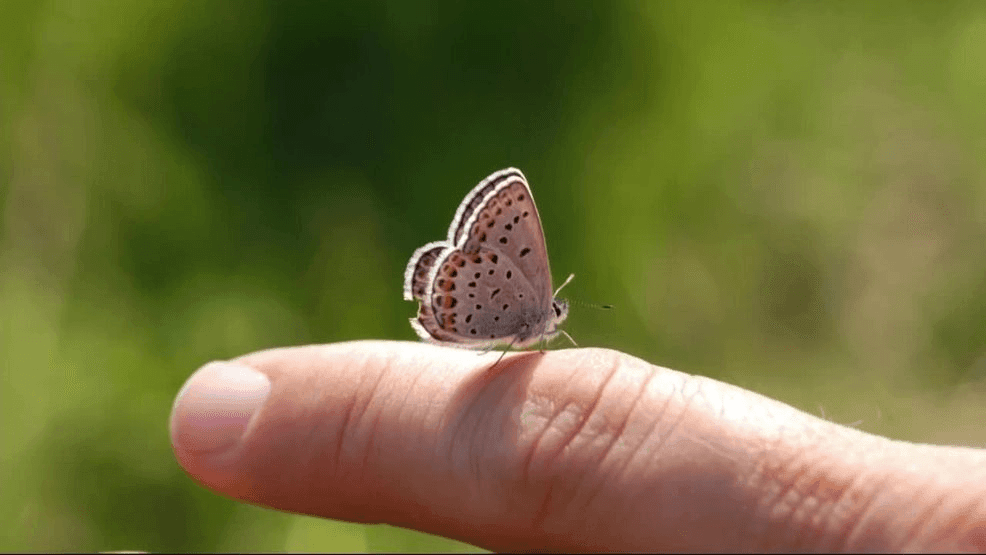MUSKEGON COUNTY, Mich., (WPBN/WGTU)— The endangered Karner blue butterfly, once scarce in Michigan, is making a notable comeback, particularly in the western part of the Lower Peninsula.
The butterfly has been spotted in areas near the Muskegon River, including Oceana, Mecosta, and Newaygo counties.
Duke Elsner, a retired Michigan State University Extension Service educator, explained the butterfly’s precarious situation. “It lives only in a few selected habitats in maybe a dozen Michigan counties and it’s on the state and federal endangered species list because its habitats are frail and many of them were converted to agriculture or other things over time,” he said.
Michigan is home to over 150 breeds of butterflies, but the Karner blue has been one of the most endangered.
Elsner described the butterfly’s appearance, noting, “The upper surface of males is a very deep blue with some iridescent sheen. The upper surface of the females are more brownish actually and they’re really drab and hide well.”
The Karner blue has suffered significantly due to habitat loss and degradation.
However, efforts to restore its habitat have been underway. “There’s been a tremendous amount of work with National Forest Service and Michigan Conservation Units like the DNR to restore habitat space for this butterfly to make sure that lands are managed in a manner that provide it both food and shelter,” Elsner said.
To further protect the Karner blue, Elsner emphasized the importance of limiting pesticide use.
He also highlighted the role of organizations in conservation efforts. “Organizations like the DNR have adequate funding and federal organizations like the Forest Service that are the ones that are doing the habitat restoration monitoring and keeping track of this butterfly,” he said.
While the population of the Karner blue is not officially tracked, it is believed that the biggest decline occurred in the 1970s.
In 2018, estimates showed fewer than 100 Karner blues in Michigan.
That number has now increased to around 10,000.
